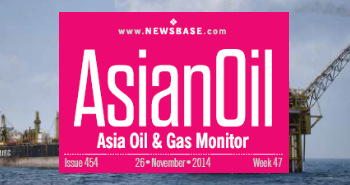AsianOil: India's oil, gas demand to stay robust: stable outlook for downstream firms

India's oil and gas demand is poised to remain strong in the next financial year, even as global headwinds dampen refining margins, according to India Ratings and Research (Ind-Ra). Despite these challenges, the credit profile of downstream oil marketing companies (OMCs) is still expected to remain stable, supported by healthy demand for petroleum products and robust marketing margins.
This stability is also projected to offset the impact of compressed gross refining margins (GRMs), ensuring a healthy overall EBITDA performance.
The downstream sector may witness an increase in debt levels due to ongoing refinery expansion projects. These projects are part of a broader effort to meet the country's growing energy demands, with India's refinery capacity expected to expand by an estimated 22% over the next two to three years.
For upstream companies, however, credit profiles will remain linked to fluctuations in crude oil prices. While a moderation in oil prices and declining production from older fields may weigh on EBITDA generation, this could be partially offset by new production from recent discoveries and the removal of special excise duties on crude oil production.
Meanwhile, the city gas distribution (CGD) field is also expected to maintain a stable credit profile throughout fiscal 2026.
The agency also flagged concerns over the reduced allocation of administered price mechanism (APM) gas to the CGD sector according to ndtvprofit.com, particularly for compressed natural gas (CNG). This has been driven by increased demand in the CGD segment and a decline in APM gas production, compelling players involved to explore alternative supply arrangements.
Stand-alone petrochemical players too are likely to experience an improvement in fiscal 2026, driven by better crack spreads and a resolution of oversupply issues stemming from significant capacity additions between FY19 and FY24, especially in China. EBITDA for these players, as well as integrated refiners, is expected to recover from the lows seen in fiscal 2024.
GRMs are thus projected to remain subdued in fiscal 2026, mirroring trends observed during the first half of fiscal 2025. This is attributed to sluggish global consumer and industrial demand, particularly from China, coupled with increased supply from global refinery expansions. Nevertheless, domestic demand for petroleum products, including diesel, petrol and LPG, is expected to remain robust, bolstering the sector's overall outlook.
Crude oil prices have seen a decline, averaging $78.7 per barrel in the second quarter of fiscal 2025 and a further drop to $73.02 in November 2024. Despite this, upstream companies are expected to maintain healthy margins, with crude prices remaining above $65 per barrel – well above the estimated production break-even cost of $40 to $45 per barrel.
Ind-Ra further anticipates that geopolitical factors, including production targets set by OPEC+ and global demand recovery, will significantly influence crude prices in the coming year. For domestic producers in India, the removal of windfall profit taxes on crude offers some respite from the impact of falling prices.
In conclusion, India's oil and gas sector through the next year is positioned for growth, with downstream companies in knock-on effect benefiting from stable credit profiles and strong demand.
While upstream players may face pressures from moderating oil prices and legacy field output declines, new discoveries and policy support are expected to provide a buffer. The CGD sector, though exposed to challenges, remains resilient, and the petrochemical industry is poised for recovery.
India's ongoing investments in refinery capacity and its ability to navigate global uncertainties underline the sector's critical role in the country's energy security and economic growth trajectory.
If you’d like to read more about the key events shaping Asia’s oil and gas sector then please click here for NewsBase’s AsianOil Monitor.


Follow us online